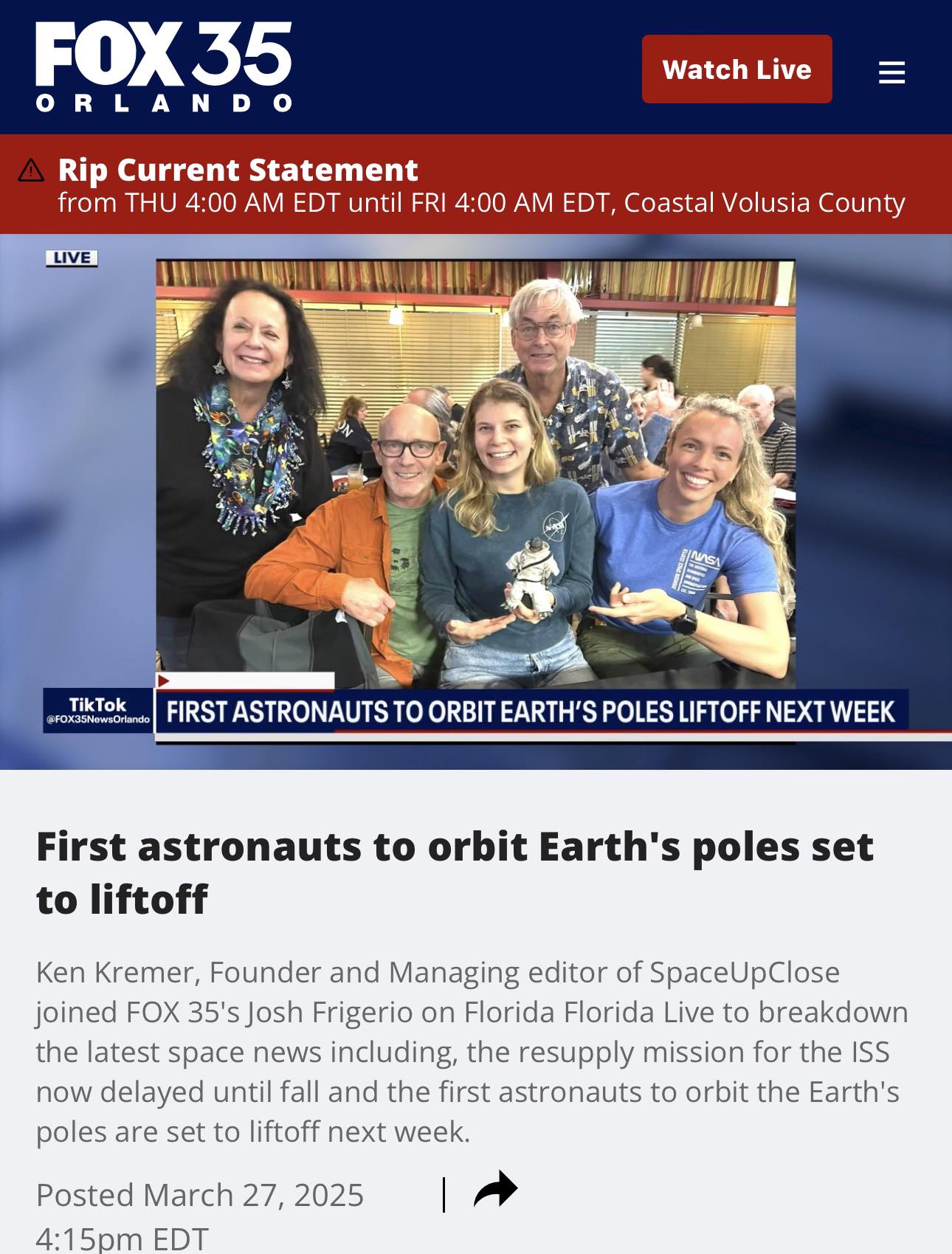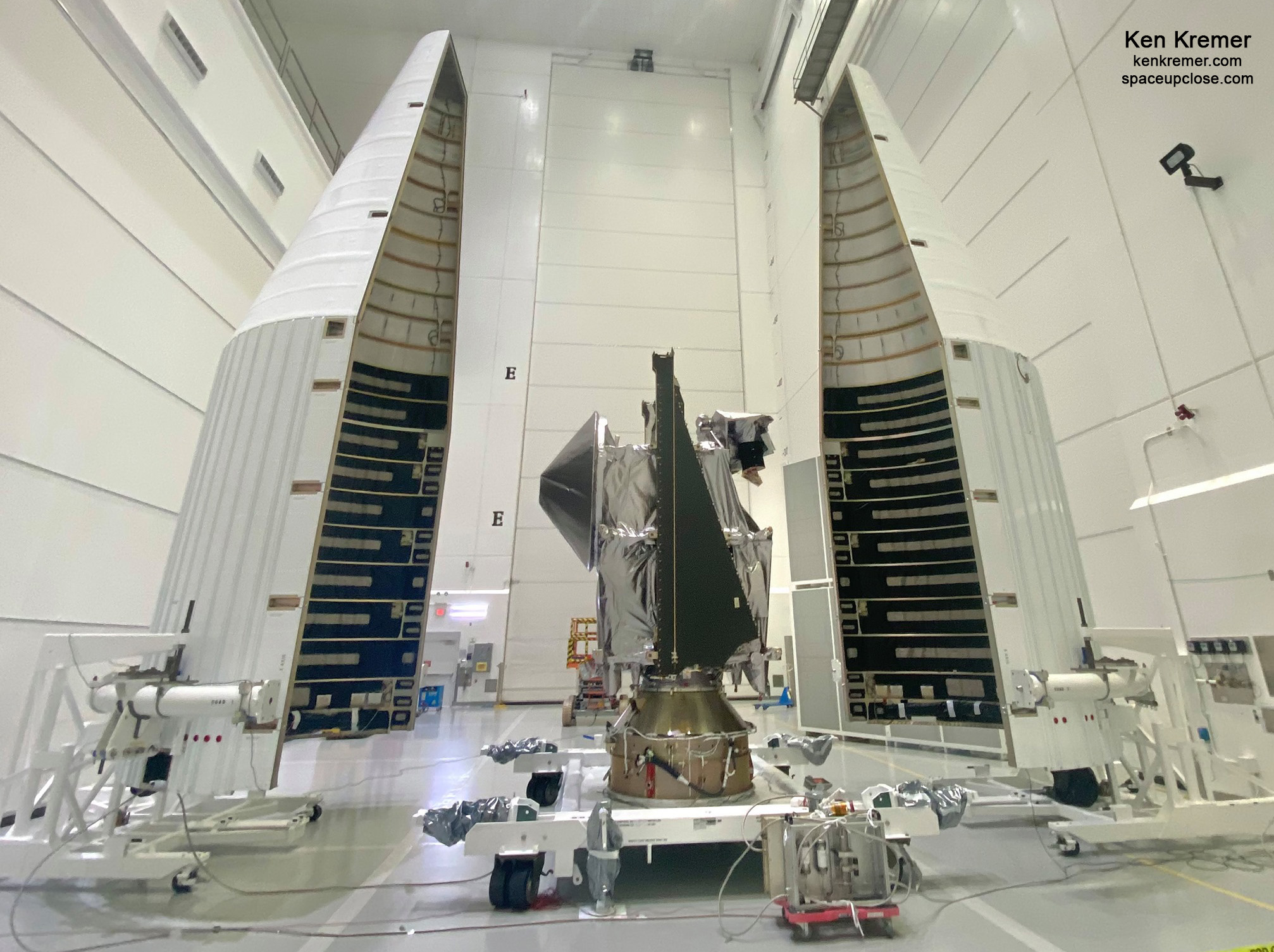
For SpaceUpClose.com & RocketSTEM
ASTROTECH SPACE OPERATIONS, TITIUSVILLE, FL – NASA’s first ever mission to explore the Trojan asteroids named Lucy is in final preparations for launch in one week on a United Launch Alliance Atlas V rocket from Florida’s Space Coast aiming to explore fossilized remnants leftover from the birth of our Solar System some 4.5 Billion years ago sharing Jupiter’s orbit.
NASA’s Lucy is an ambitious probe unprecedented scope utilizing a ‘once-in-a-lifetime planetary launch window’ that will explore seven pristine Trojan asteroids orbiting ahead of and behind Planet Jupiter at the L4 and L5 Lagrange points and one main belt asteroid during a mission spanning 12 years.
Launch is scheduled for 5:34 a.m. EDT on Saturday, Oct. 16, 2021, just before sunrise on a ULA Atlas V rocket from Space Launch Complex 41 at Cape Canaveral Space Force Station in Florida.
The launch opportunity runs until 6:49 a.m. on Oct 16 and the overall launch window last just over three weeks.
Check out my up-close photos herein of NASA’s Lucy asteroid explorer taken during my media visit Sept. 29 in the clean room at the Astrotech Space Operation payload processing facility in Titusville located about a dozen miles from the launch pad nearby the Kennedy Space Center and Cape Canaveral Space Force Station in Florida.
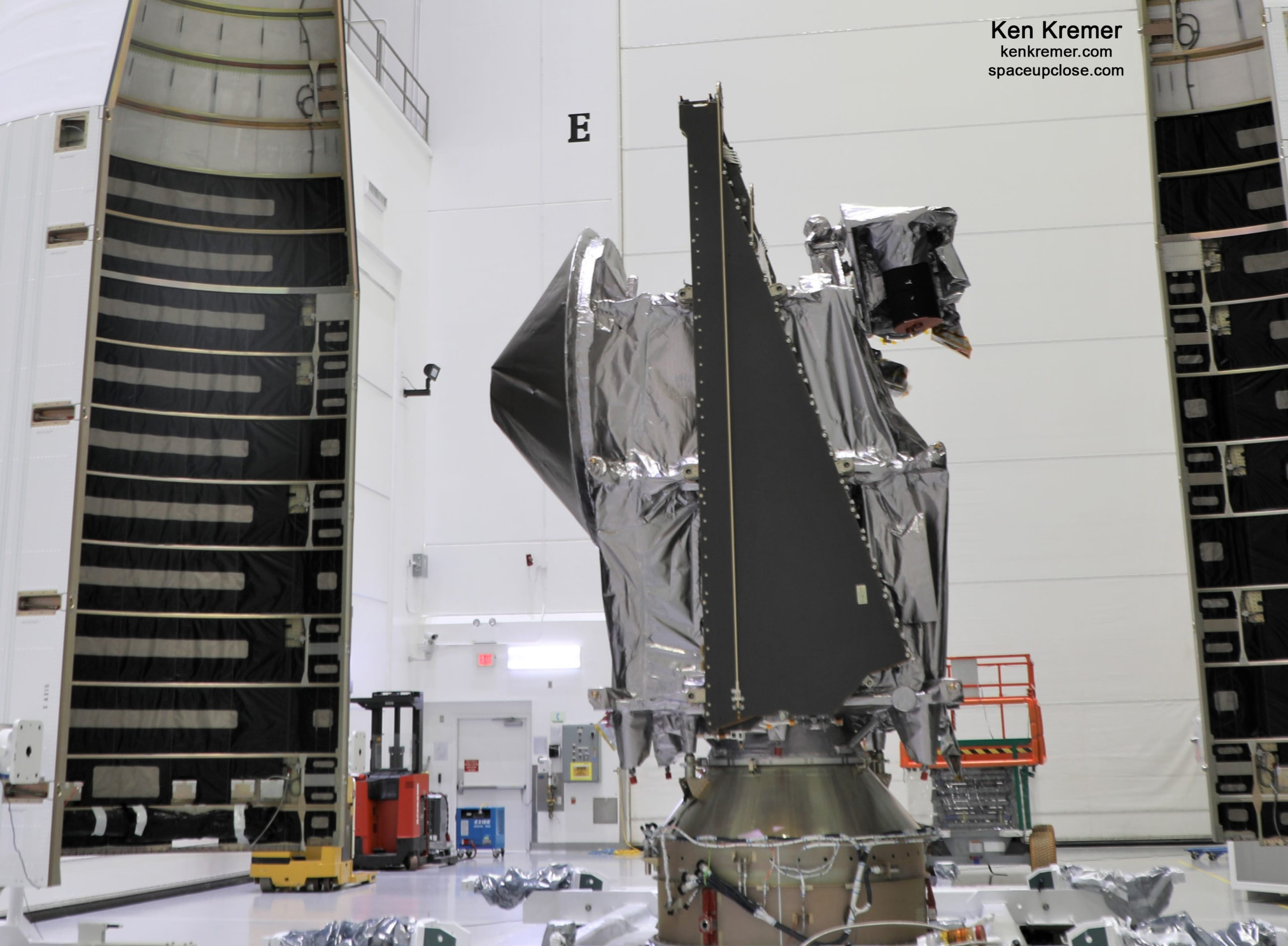
To keep Lucy safe and prevent contamination we all wore ‘bunny suits’ and snood masks and gloves taped to our suits
Lucy was positioned between the two payload fairing halves atop the upper stage payload adapter and ready for encapsulation by technicians and sealing the nose cone tightly shut.
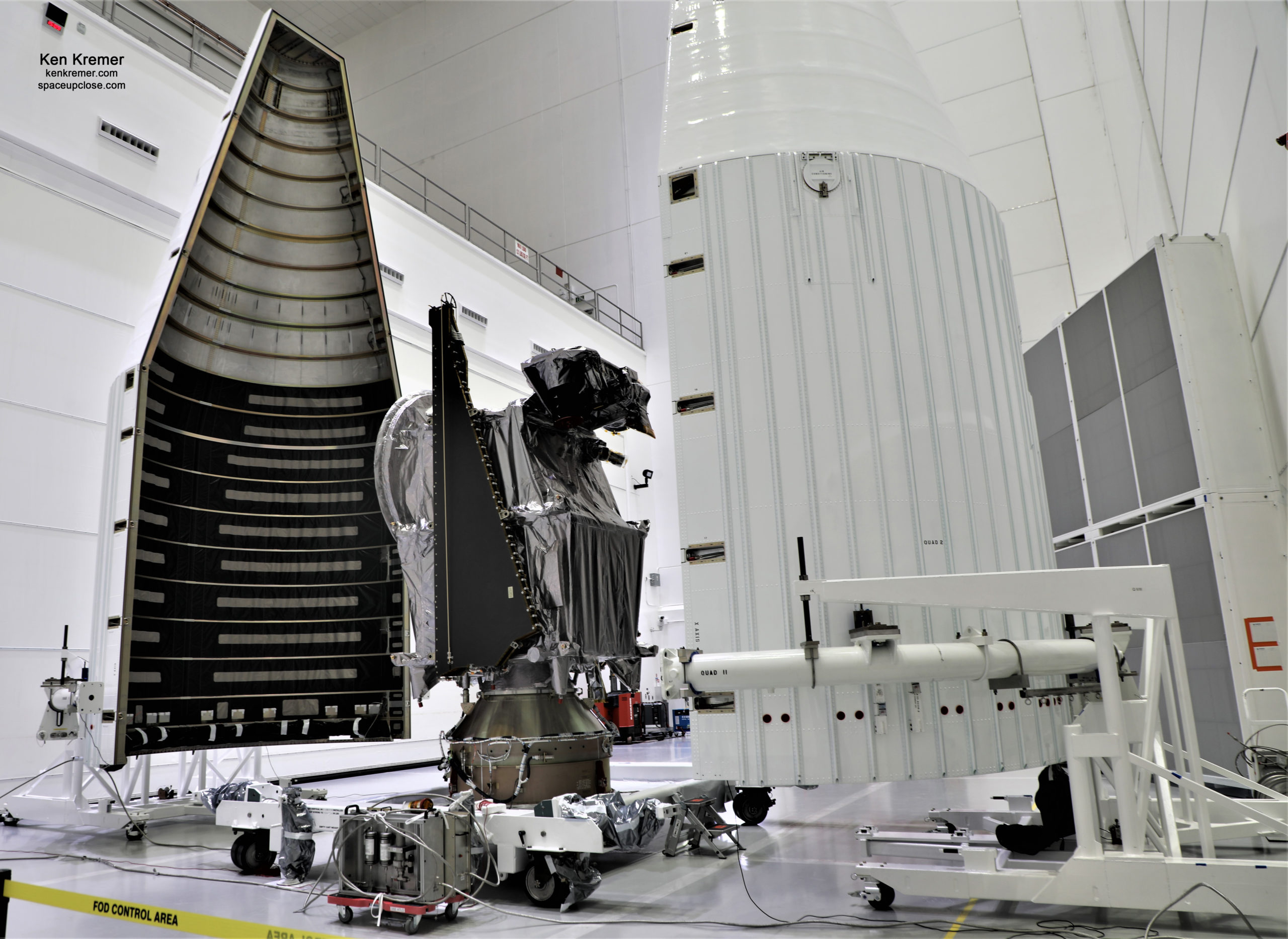
I was very fortunate and grateful to visit Lucy representing Space UpClose as only a very limited number of media were allowed by NASA into the Astrotech cleanroom.
You can watch my new prelaunch presentation about the Lucy mission on the Oct. 6 edition of the ‘Stay Curious’ space show from the American Space Museum including many of my cleanroom photos – see video below.
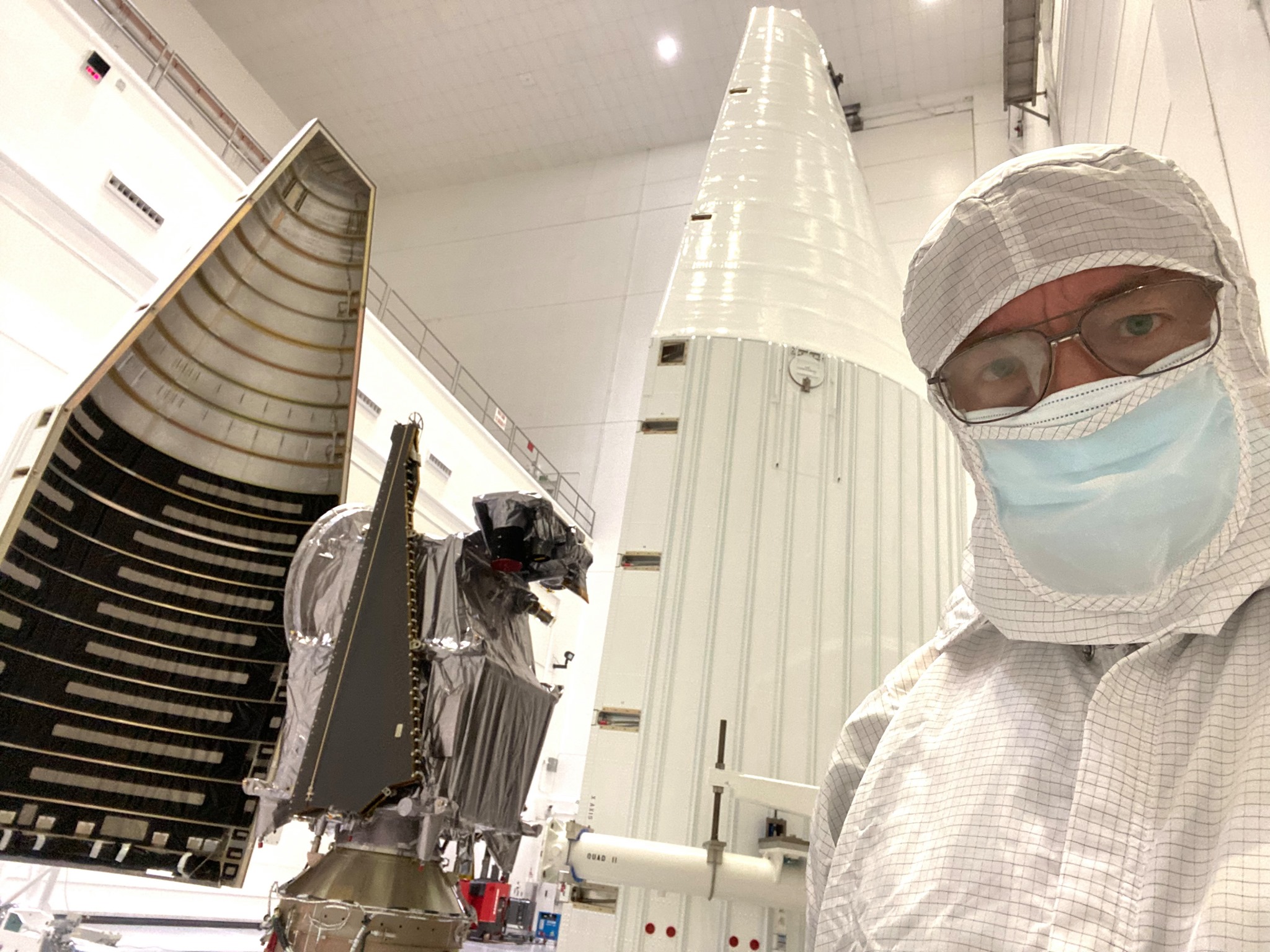
Soon after our cleanroom visit Lucy was encapsulated inside the fairings:
Encapsulation ✅@NASA's #LucyMission spacecraft was successfully encapsulated inside the @ulalaunch payload fairings that will protect it during launch. We are gearing up for this mission to the Trojan Asteroids! pic.twitter.com/uLN8ErkD5M
— NASA's Launch Services Program (@NASA_LSP) October 4, 2021
The payload fairing protects the spacecraft during the first few minutes of flight from Earth’s atmosphere, tremendous aerodynamic stresses and frictional heating induced after launch as it soars aloft piercing the atmosphere and accelerates to escape velocity.

Watch this NASA video of the encapsulation process:
#ICYMI ➡️ Take another look at the Lucy spacecraft as it was packaged in the @ULALaunch payload fairings that will protect it during launch. Get the details behind the #LucyMission milestones on our blog: https://t.co/kUCZ9ThbOS pic.twitter.com/yQonJ3WLVZ
— NASA's Launch Services Program (@NASA_LSP) October 7, 2021
The next step was transport out to pad 41 and hoisting atop the waiting Atlas V inside the ULA Vertical Integration Facility (VIF).
With Lucy encapsulated inside the nose cone it was raised and placed on the Atlas V second stage in the VIF by ULA technicians on Oct. 7.
The #LucyMission spacecraft was placed atop the ULA #AtlasV 401 rocket today in preparation to embark on a voyage to uncharted worlds in the Trojan asteroid swarms that orbit near Jupiter.
Read more in the blog: https://t.co/xePTUflJCF pic.twitter.com/B2IuutrIwr
— ULA (@ulalaunch) October 7, 2021
Overall the tight timeline launch window lasts 23 days into early November when the orbits of Earth and the trojans align just right
Lucy will be the first space mission to study the Jupiter Trojan asteroids – fossilized remnants of our early solar system trapped in stable orbits.
The Trojans are believed to be comprised of the initial material that formed the planets within the solar system.
No other space mission in history has been launched to as many different destinations in independent orbits around the Sun! says the Lucy team.
Lucy’s 5 Deep Space Maneuvers and 3 Earth Gravity Assists will keep the spacecraft on target!
Watch this NASA visualization:
#CountdowntoLaunch! 11 days until the start of the #LucyMission's epic voyage! In order for Lucy to explore 6 asteroid systems over 12 years, we will need to drive the spacecraft. Lucy's 5 Deep Space Maneuvers and 3 Earth Gravity Assists will keep the spacecraft on target! pic.twitter.com/wKGEGYUDaJ
— Lucy Mission (@LucyMission) October 5, 2021
“We could not be more pleased that NASA has selected ULA to launch this amazing planetary science mission,” says Tory Bruno, ULA’s president and chief executive officer.
“This mission has a once-in-a-lifetime planetary launch window, and Atlas V’s world-leading schedule certainty, coupled with our reliability and performance provided the optimal vehicle for this mission.”
“Our Atlas V rocket has achieved 100 percent mission success, and we look forward to working again with our mission partners to explore our universe.”
The mission will launch aboard an Atlas V 401 configuration rocket with a 4 meter (13-foot) diameter payload fairing and a single engine Centaur upper stage with no thrust augmentation from first stage solid rocket boosters.
Here is a detailed outline of the Lucy asteroid flyby tour:
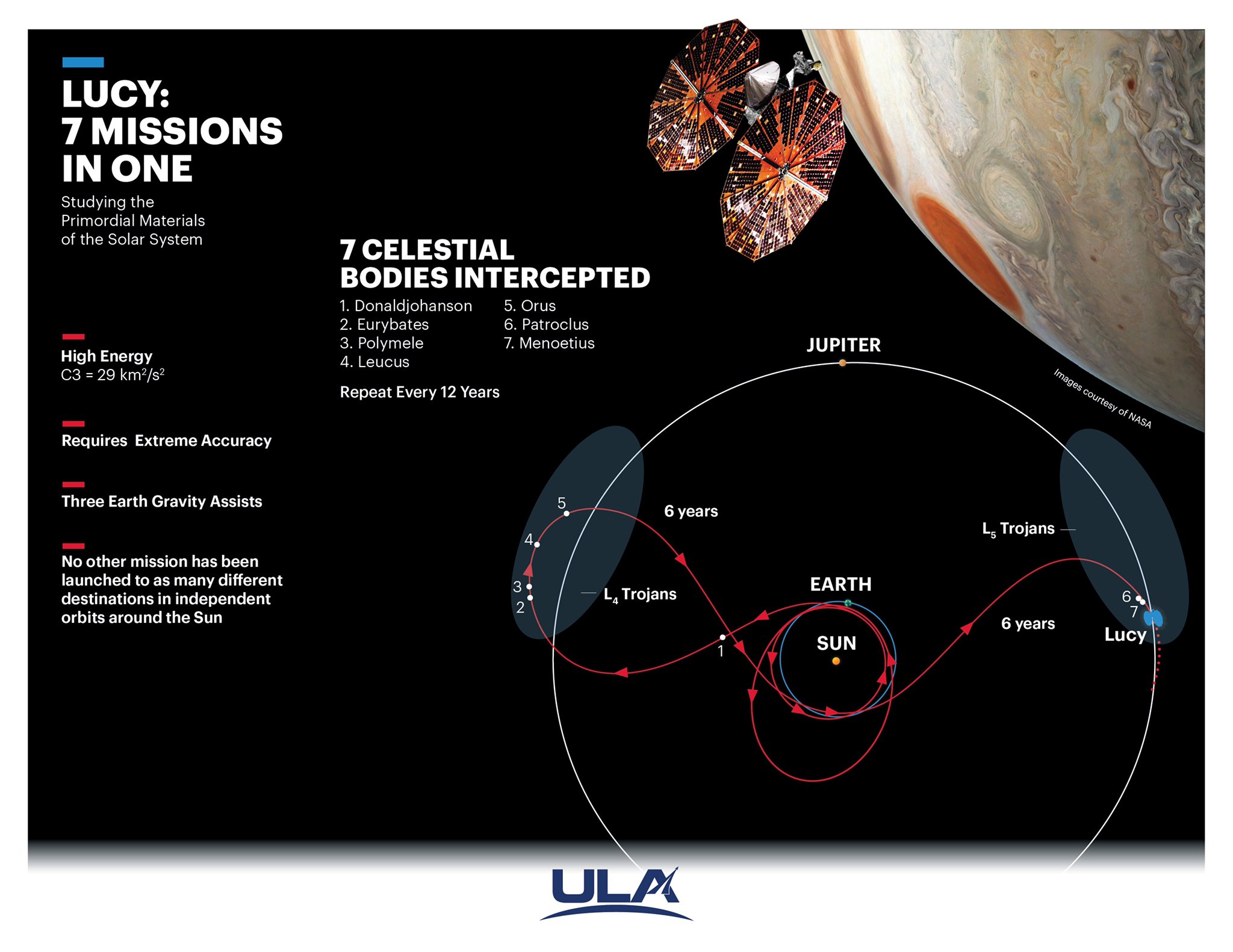
After launching on the Atlas V in Oct 2021, Lucy will carry out two Earth flyby maneuvers in Oct 2022 and Dec 2024 to set up the asteroid flyby tour.
Then it will fly by a main belt asteroid Donaldjohanson in April 2025 named after the discoverer of the Lucy fossil in Ethiopia
The Trojan asteroid flyby’s begin in the L4 swarm in August 2027 leading Jupiter with a total of 5 asteroid encounters, one of which is a binary, and continuing for 15 months into 2028 through November.

Lucy will then fly back to the inner solar system for a 3rd Earth flyby gravity assist to hurl it back out on a 6 year journey and traverse to the L5 Trojan swarm for a flyby of a Trojan binary in March 2033 of the final two asteroids.
During the 4156 day mission Lucy will investigate seven Trojan asteroids, which lead and follow Jupiter in its orbit by roughly 60 degrees and one main belt asteroid that “hold vital clues to the history of the Solar System.”
The Trojans are clustered in two “swarms” of asteroids at the L4 and L5 Lagrange points centered 60 degrees ahead of and behind massive Jupiter in its path around the Sun as the largest planet on our Solar System
These asteroids are thought to be remnants of the initial material that formed the planets within the solar system.

Lucy is a Discovery class mission led by principal investigator Harold “Hal” Levison from the Southwest Research Institute in Boulder, Colorado.
“Lucy provides us with a unique opportunity,” says Levison.
“Because the Trojans are remnants of the stuff that formed the outer planets, they are literally the fossils of planet formation. Lucy, like the human fossil for which it is named, will revolutionize the understanding of our origins.”
“Jupiter’s swarms of Trojan asteroids may be remnants of the primordial material that formed the outer planets, and serve as time capsules from the birth of our solar system more than 4 billion years ago. Lucy will be the first space mission to study the Trojans.”

The mission takes its name from the fossilized human ancestor (named “Lucy” by her discoverers) whose skeleton provided unique insight into humanity’s evolution.
“Lucy will complete a 12-year journey to seven different asteroids.”
Lockheed Martin Space in Littleton, Colorado, is prime contractor for the Lucy mission and built the spacecraft.

Lucy is equipped with a payload of three science instruments which are mounted on the Instrument Pointing Platform (IPP).
The science payload is comprised of L’Ralph, L’Lorri and L’TES.
- L’Ralph (composed of the Multi[1]spectral Visible Imaging Camera, MVIC – the color visible imager, and the Linear Etalon Imaging Spectral Array, LEISA – the infrared imaging spectrometer).
- L’LORRI (LOng Range Reconnaissance Imager – the high spatial resolution imager).
- L’TES (Thermal Emission Spectrometer – for measuring the thermal infrared), and T2CAM (Terminal Tracking CAMera, visible imager for navigation.
They will gather measure about geology, chemical composition, color, physical properties, shapes, masses as well as to look for moons and rings during each fast flyby.

Southwest Institute (SwRI) in Boulder, Colorado is the principal investigator institution for the Lucy Mission and will lead the science investigation. NASA’s Goddard Space Flight Center, Greenbelt, Maryland will provide overall mission management, systems engineering, and safety and mission assurance. Lockheed Martin Space Systems in Denver, Colorado will build the spacecraft.
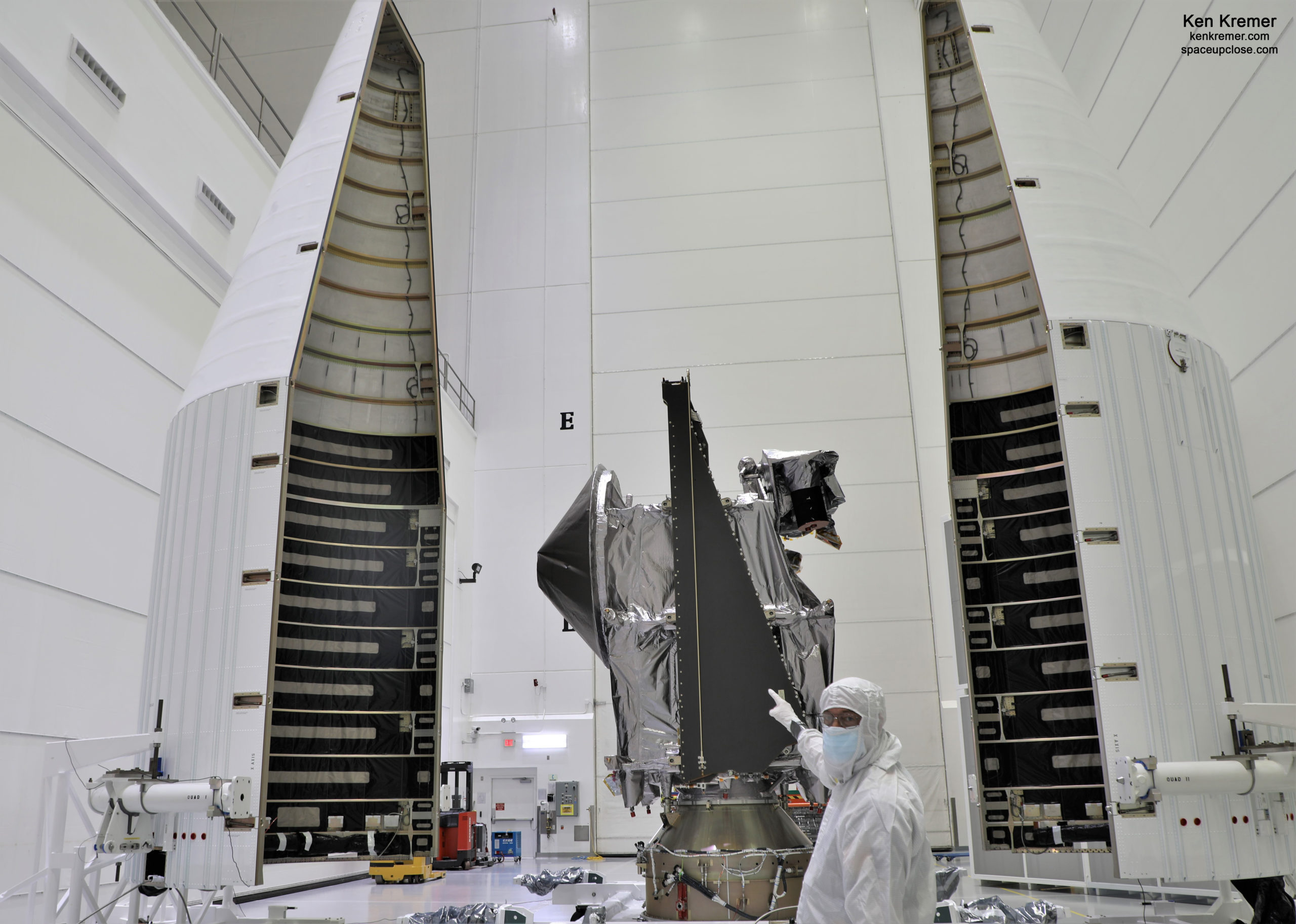
Ken Kremer interview on ‘Stay Curious’ space show Oct 6 at the American Space Museum, Titusville, Florida.
https://www.facebook.com/SpaceWalkOfFame/videos/686060975688731
Ken will be onsite at NASA’s Kennedy Space Center for reporting about the Lucy mission
Watch Ken’s continuing reports about Lucy Asteroid mission, Blue Origin and Space Tourism, SpaceX Cargo and Crew Dragons, Artemis and NASA missions, SLS, Orion, SpaceX Starlink, Commercial Crew and Starliner and Crew Dragon and onsite for live reporting of upcoming and recent SpaceX and ULA launches including Crew 1 & 2 & 3, ISS, Solar Orbiter, Mars 2020 Perseverance and Curiosity rovers, NRO spysats and national security missions and more at the Kennedy Space Center and Cape Canaveral Space Force Station.
Stay tuned here for Ken’s continuing Earth and Planetary science and human spaceflight news: www.kenkremer.com –www.spaceupclose.com – twitter @ken_kremer – email: ken at kenkremer.com
Dr. Kremer is a research scientist and journalist based in the KSC area, active in outreach and interviewed regularly on TV and radio about space topics.
………….
Ken’s photos are for sale and he is available for lectures and outreach events
Please consider supporting Ken’s work by purchasing his photos and/or donating at Patreon:
https://www.patreon.com/kenkremer

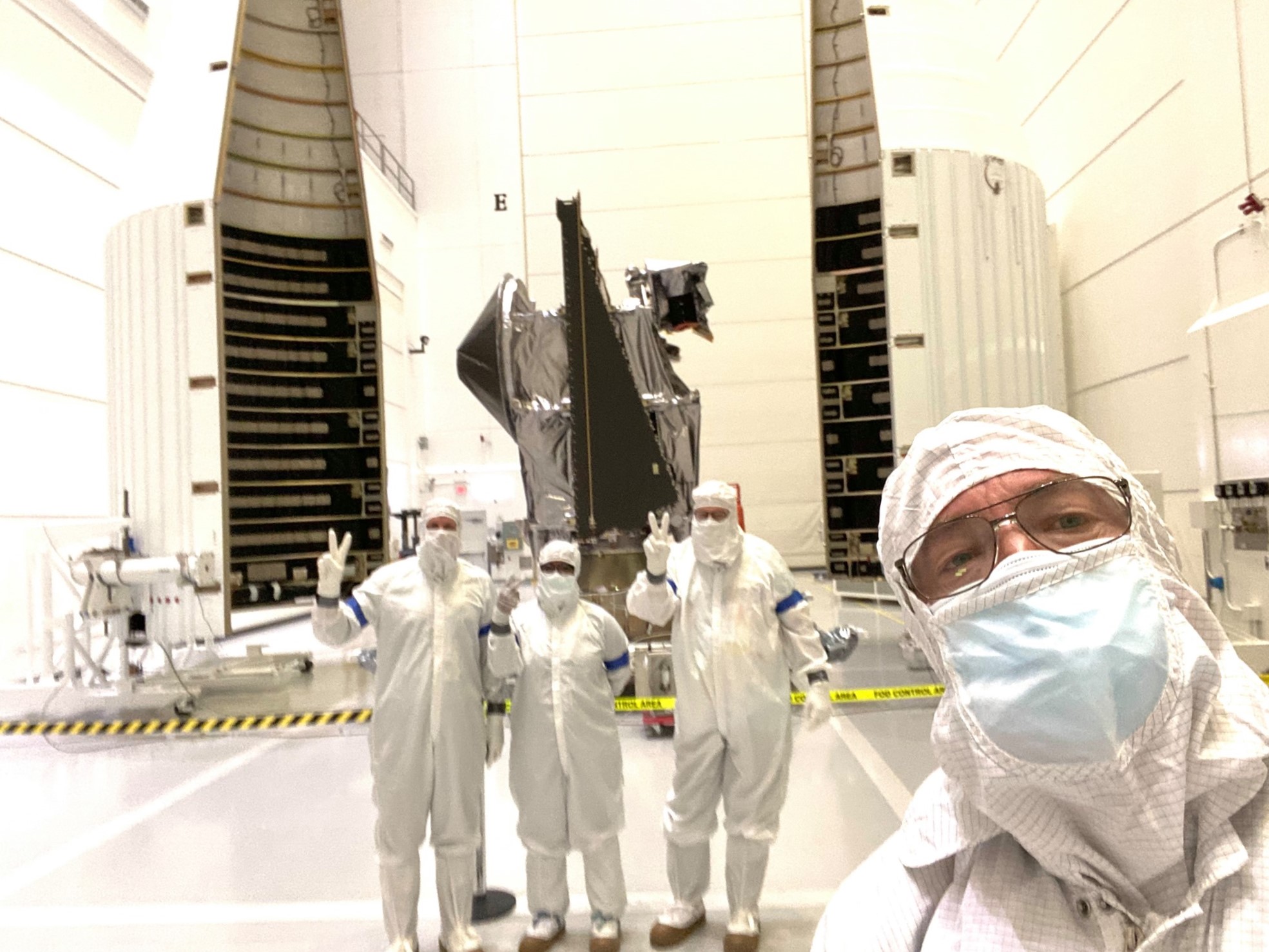
x



